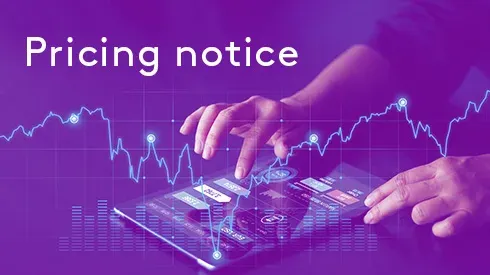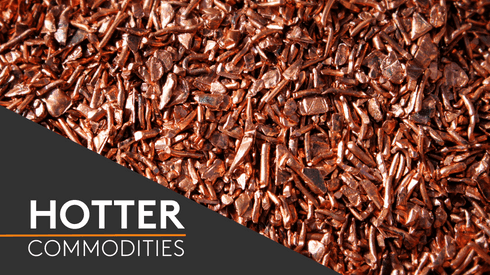Navigating the world of copper scrap trading requires a deep understanding of market dynamics, materials and price trends. With copper being a crucial component in industries ranging from construction to electronics, its scrap market plays a vital role in supporting global supply chains.
Whether you’re an established trader or just entering the industry, this article will ensure you’re equipped with the knowledge to make informed decisions this year.
Global copper scrap market trends and outlook for 2025
The scrap copper market plays a critical role in bridging the gap between refined copper supply and demand. Here are some key trends shaping the industry:
1. Copper supply constraints
Global growth in refined copper supply is expected to lag behind demand due to challenges like limited mine expansions, environmental regulations and cost escalations. This places a greater emphasis on secondary supply sources, i.e., copper scrap. Production from scrap is projected to grow at a compound annual growth rate (CAGR) of 4.2% in the next decade, outperforming the 2.1% CAGR of primary production.
2. Geopolitical factors
Geopolitical developments, such as potential US-China trade tariffs and regulatory changes, are creating uncertainties in the global scrap copper market. Chinese buyers have already reduced imports of US origin copper scrap, impacting export dynamics. Such shifts will continue to influence global prices and trading patterns in 2025.
Since November, Chinese demand for copper scrap imports slowed significantly, influenced by uncertainty surrounding potential US tariffs on Chinese copper and aluminium imports, as well as the Lunar New Year holiday. US President Donald Trump announced a 10% levy on all Chinese imports, effective February 4, further heightening market caution.
3. Sustainability and policy support
The push for sustainable practices has led to increased efforts to promote recycling initiatives globally. Many governments are introducing favorable policies to encourage the collection and trade of copper scrap. These developments are expected to bolster the secondary copper market, further solidifying its role in the global supply chain.
4. Stable prices
While Fastmarkets’ data suggests that copper scrap prices have remained relatively stable over the past few months, predominately export-heavy grades have begun to widen as global uncertainty grows. For instance, discounts for No. 2 copper to refiners and No. 2 copper to brass ingot makers have recently decreased, despite market sources noting stable domestic demand.
Understanding key copper scrap grades
Copper scrap is classified into various grades based on purity, condition and end-use applications. Below are some of the most common grades and their characteristics:
Copper scrap no. 1
This is one of the highest grades of copper scrap, consisting of uncoated and unalloyed copper. It includes items such as copper pipes, bus bars and clippings. It is clean, free of any contaminants and is highly sought after due to its purity.
- Common usage: Recycled into new copper wiring, pipes, or products requiring high-grade copper.
- Current market position: No. 1 copper commands some of the highest premiums in the scrap market. According to Fastmarkets, prices for Copper scrap No1 copper, discount, buying price, delivered to brass mill US, (US cents/lb) are currently steady, with discounts averaging around $0.12-0.16 per lb (as of February 2025). Demand remains strong, driven by the increasing adoption in green technologies.
Copper scrap no. 2
This grade includes copper that is less pure than No. 1, typically containing some solder, paint, or other contaminants. The lower purity results in wider applications but usually has a lower price when compared to No. 1 copper.
- Common usage: Often used in lower-quality alloys or products where purity is less critical.
- Current market position: Fastmarkets’ latest assessment reports discounts for Copper scrap No2 copper, discount, buying price, delivered to refiners, (US cents/lb) is at $0.40-0.45 per lb, slightly up from the previous weeks.
Copper scrap light
Light copper scrap comprises thin-gauge copper such as roofing sheets, gutters, or downspouts. This type is often corroded or tarnished, affecting its overall value.
- Common usage: Typically used in applications like specialty alloys or as a base material for recycling.
- Current market position: Prices for light copper remain relatively stable but are more sensitive to shifts in refining and transportation costs.
Copper scrap red brass
Red brass is an alloy primarily composed of copper, zinc, lead and tin. Known for its corrosion resistance, it is widely used in plumbing and marine equipment.
- Common usage: Recycled into components for plumbing, valves and decorative fittings.
- Current market position: Red brass is in steady demand, with prices driven mainly by industrial activity.
Copper scrap yellow brass
Yellow brass has a higher zinc content than red brass, resulting in a lighter, shinier material commonly found in plumbing fixtures and hardware.
- Common usage: Used in the recycling of hardware, locks and decorative items.
- Current market position: According to Fastmarkets, Copper scrap yellow brass solids, buying price, delivered to brass ingot makers, (US cents/lb) is ranging between $2.65-2.71 per lb, slightly below its end of year position. Notably, tariffs on US exports to China may impact its pricing dynamics in the coming year.
Copper scrap auto radiators
This grade is sourced from automotive radiators and consists of both copper and brass components. Its unique composition makes it a specialized material with diverse end-use applications.
- Common usage: Recycled into plumbing fixtures or industrial machinery components.
- Current market position: Prices for Copper scrap radiators, buying price, delivered to brass ingot makers, (US cents/lb) have shown minor fluctuations, currently assessed at $2.74-2.78 per lb by Fastmarkets. While demand remains steady, export restrictions and geopolitical uncertainties may present challenges.
Leveraging Fastmarkets’ insights for smarter copper scrap trading and prices
For scrap traders, staying informed about market dynamics is key to securing profitable deals. Fastmarkets is a trusted source for real-time pricing data, market analysis and insights on global copper markets. By using Fastmarkets, traders can:
- Monitor day-to-day price movements and discounts
- Receive updates on geopolitical events affecting trade
- Access expert forecasts to stay ahead of market trends
Fastmarkets’ comprehensive coverage ensures you have all the tools you need to make data-driven decisions in a competitive market.
Preparing for the future of the copper scrap market
The copper scrap market is poised for significant growth and transformation in the years ahead. With supply constraints, geopolitical shifts and sustainability initiatives driving change, scrap traders must remain agile and informed.
By understanding key copper grades, copper scrap prices, tracking market trends and leveraging tools provided by Fastmarkets, you can position yourself for success in 2025 and beyond. Stay ahead of the curve – analyze, adapt and make smarter trading decisions.
Find your competitive edge with Fastmarkets’ market-reflective copper price data and market analysis. In an ever-changing market, our data empowers copper buyers and sellers like you to trade with confidence, even in the face of unpredictable conditions. Find out more here.






